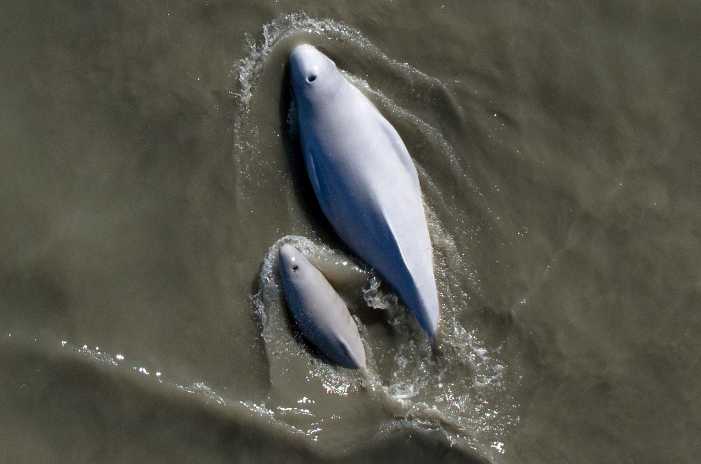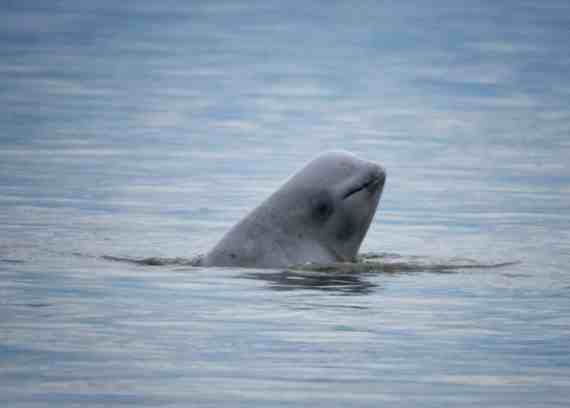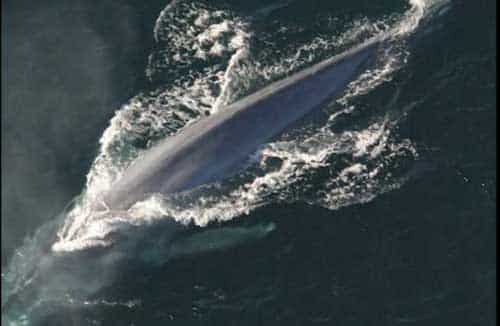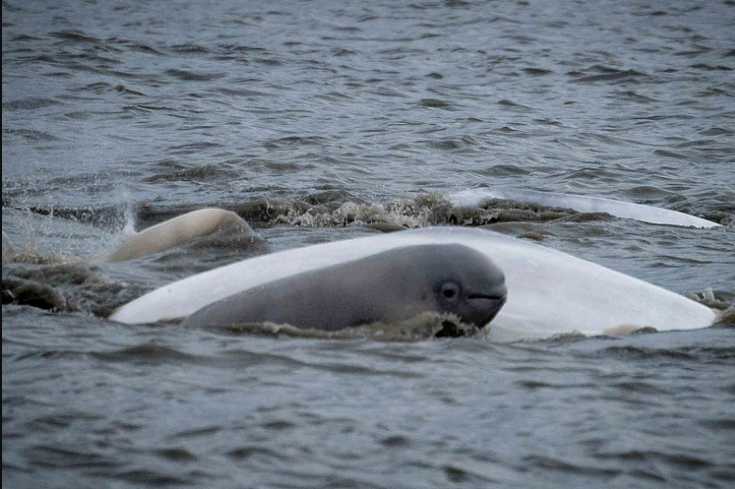Scientists partnered with tech industry experts to develop the first machine learning application for acoustic monitoring of Alaskan beluga whales.
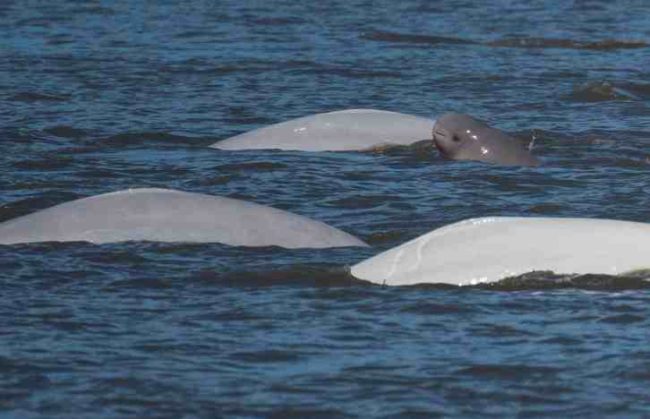
An innovative machine learning application will help scientists collect information essential to protect and recover the endangered Cook Inlet beluga whale population.
In 1979, the Cook Inlet beluga population began a rapid decline. Despite being protected as an endangered species since 2008, the population still shows no sign of recovery and continues to decline.
Beluga whales are vulnerable to many threats such as pollution, extreme weather, and interactions with fishing activity. A special concern is underwater noise pollution, which interferes with the whales’ ability to communicate, navigate, and find food. This is a particular problem for the Cook Inlet population, which lives in Alaska’s most densely populated region. The area supports heavy vessel traffic, oil and gas exploration, construction, and other noisy human activities.
To effectively support the recovery of the Cook Inlet population, managers need to know how belugas use habitat seasonally and what threats they face.
Acoustic Monitoring
Passive acoustic monitoring provides vital information on beluga movement and habitat use. It also helps scientists identify where noise may be affecting beluga behavior, and ultimately, survival.
Scientists listen for belugas using a network of moored underwater recorders. These recorders collect enormous volumes of audio data including noise from the natural ocean environment, human activities, and other animals, as well as beluga calls.
To detect potential beluga signals in these sometimes cacophonous recordings, scientists have traditionally used a series of basic algorithms. (An algorithm is a step-by-step process to solve a math problem.) However, these algorithms don’t work as well in noisy areas. It’s hard to distinguish faint beluga calls from signals like creaking ice, ship propellers, and the calls of other cetaceans like killer and humpback whales. Until now, it required months of labor-intensive analyses by scientists to remove the false detections and correctly classify beluga calls.



